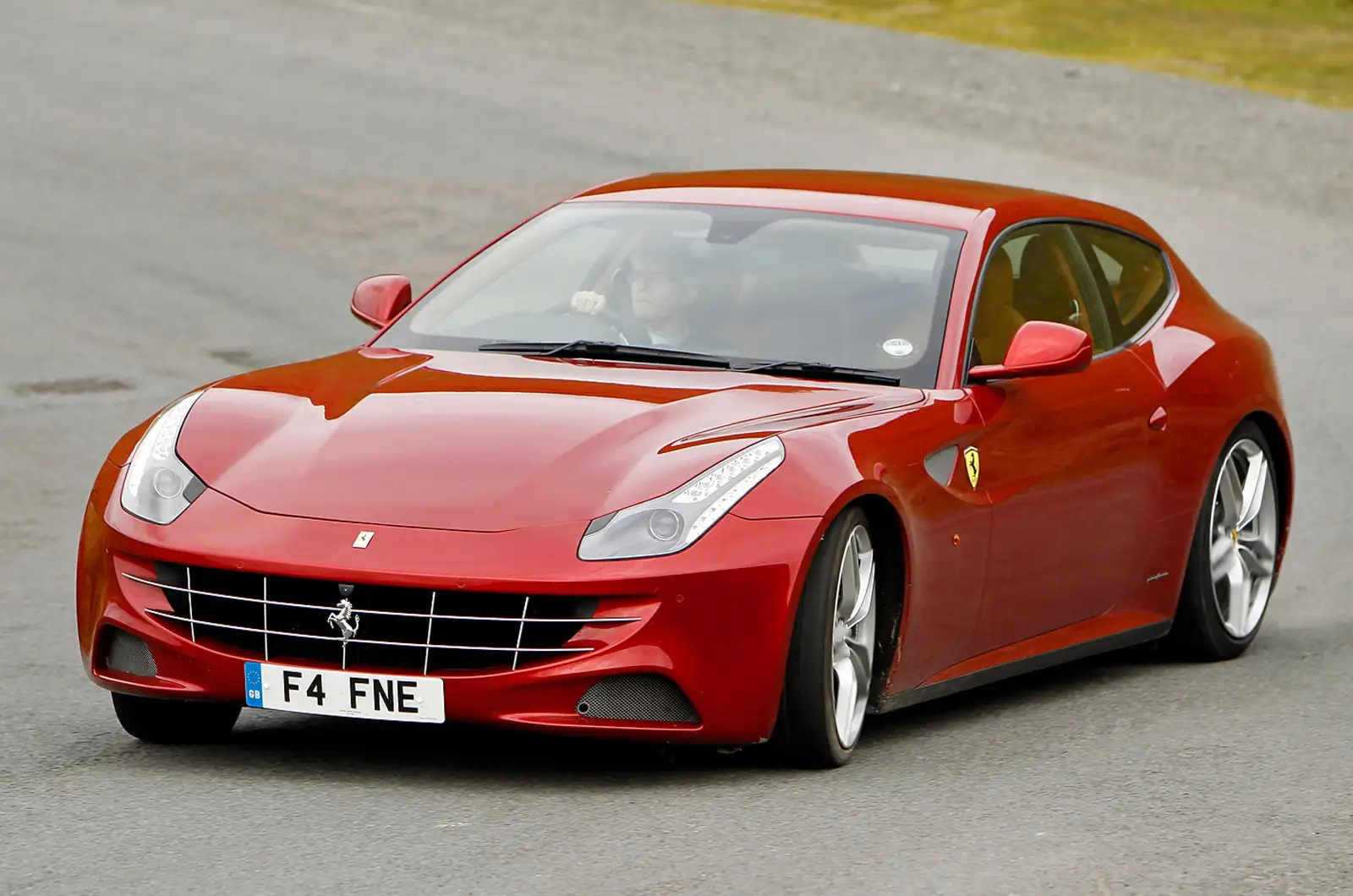If you’re worried about the FF being too lairy, fear not, for it’s a true GT at heart. Power is delivered in a smooth and linear fashion and it never feels intimidating.
That sense of assurance comes partly from the four-wheel drive system, which is unlike any other.
Most of the time, the FF is rear-driven, with power fed through the rear-mounted seven-speed dual-clutch gearbox, but there’s a secondary two-speed ’box ahead of the engine that can take power from the crankshaft and drive the front wheels when required.
But in order for the front and rear ratios to match, Ferrari fitted two electronic slipping clutches to ensure the wheel speeds aligned.
The clutches effectively take on the role of the front differential, but also manage the traction and torque vectoring for improved handling – and it certainly shows on a twisty B-road.
With the front axle dormant most of the time, the FF feels like a rear-driven GT through fast corners.
Only when you point it at low- and medium-speed bends, when the car is about to lean into oversteer, does the front axle intervene.
Inside, the FF is sumptuous, with rich leather furnishings, plush metals and a well-configured dash, although it does feel a little dated next to a modern Ferrari.
At least the steering wheel isn’t cluttered with too many functions. There’s plenty of room in the back for adults, too, and it has the same boot capacity as a Cupra Formentor.
Naturally, that complex and highly bespoke drivetrain will concern prospective buyers today and ultimately there’s no such thing as a ‘cheap V12 supercar’, irrespective of list price.
Plus, potential buyers will find the DCT ’box a little dim-witted at low speeds, and on UK roads it is a firm-riding car.
But these are small prices to pay, surely, for an achingly cool GT that can top 200mph on the autobahn and then whisk you effortlessly up an icy Alpine pass to the door of your chalet.

